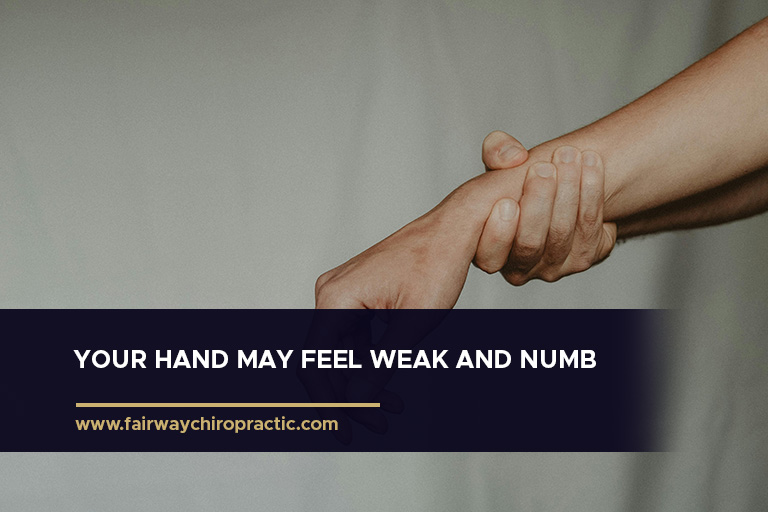
Do your hand, arm, or wrist hurt, feel numb, or have tingling sensations? It can be an indication that you have carpal tunnel syndrome. If that’s the case, the symptoms could start out being manageable and minor. However, if left untreated, the condition can worsen and make it very uncomfortable and difficult for you to move your hands, which interferes with your ability to carry out regular chores at home and at work.
About 3% of Canadians suffer from carpal tunnel syndrome, which costs businesses billions in health insurance and workers’ compensation claims annually. Corrective surgery is usually part of a recovery strategy. Fortunately, there are also non-invasive treatments available, including carpal tunnel massage, stretches, and exercise.
What Is Carpal Tunnel Syndrome?
Carpal tunnel syndrome, also known as median nerve compression, is a common ailment that causes tingling, numbness, and pain in the hand and forearm. It occurs as a result of pressure on your median nerve, which travels the entire length of your arm before passing through the carpal tunnel in your wrist and ending in your hand. The movement and feeling of your thumb, along with all the other fingers except for your pinky, is controlled by the median nerve.
Working at a computer or an assembly line for extended periods of time are examples of long-term repetitive motions or strains that are frequently linked to carpal tunnel syndrome. The symptoms could also be caused by diseases like diabetes and rheumatoid arthritis, as well as genetic conditions such as hereditary small carpal tunnel.
Symptoms

Symptoms of carpal tunnel syndrome typically appear gradually and include:
- Tingling or Numbness
Numbness and tingling in the fingers or hand may be noticeable. Usually, the thumb, index, middle, or ring finger are affected, but not the little finger. Also, in certain fingers, you might experience something like an electric jolt.
It is also possible for the sensation to extend up the arm from the wrist. These symptoms may awaken you from sleep and usually happen while you are holding the phone, newspaper, or steering wheel.
- Weakness
You may experience weakness in your hands and drop things. This can be because the thumb’s pinching muscles, which are similarly regulated by the median nerve, are weak or because the hand is numb.
Causes or Risk Factors
Carpal tunnel syndrome has been linked to several risk factors. Even though they might not be the direct cause of carpal tunnel syndrome, they might make the median nerve more susceptible to irritation or damage. A few of these include:
- Anatomic factors
The space within the carpal tunnel may change due to a wrist fracture, dislocation, or arthritis that deforms the tiny bones of the wrist and places pressure on the median nerve.
- Sex
In general, women are more likely to develop carpal tunnel syndrome. This may be due to the fact that women’s carpal tunnel area is smaller than in men.
- Nerve-damaging conditions
The risk of nerve damage, particularly damage to the median nerve, is increased by a number of chronic conditions, including diabetes.
- Inflammatory conditions
Rheumatoid arthritis and other inflammatory conditions can harm the lining of the tendons in the wrist, putting pressure on the median nerve.
- Medications
Anastrozole (Arimidex), a medication used to treat breast cancer, has been linked, in some studies, to carpal tunnel syndrome.
- Obesity
Obesity is a risk factor for carpal tunnel syndrome.
- Body fluid changes
The median nerve may become irritated if fluid retention increases the pressure inside the carpal tunnel. This frequently occurs during menopause and pregnancy. Pregnancy-related carpal tunnel syndrome typically gets better on its own after giving birth.
- Other medical conditions
Carpal tunnel syndrome may also be more common in those who have thyroid issues, kidney failure, lymphedema, and other medical concerns, such as menopause.
- Workplace factors
Working with vibrating equipment or on an assembly line that necessitates prolonged or repetitive wrist flexion can put damaging pressure on the median nerve or worsen already present nerve damage. This is especially true if the activity is done in a cold environment.
- Double or Multiple Crush Syndrome
It is common for nerves to get compressed at more than one location along it’s path. And the accumulation of even mild compression at more than one site can have the same result as carpal tunnel syndrome. Imagine for a moment a hose with water flowing through it. You could have one large kink in the hose and no water coming out as a result. Or, you could have 2 or more small kinks in the hose which have the same result. The same is true in the case of carpal tunnel – the nerve could be compromised at the level of the neck, and at multiple locations along it’s path to the hand, such as under the pectoralis minor muscle (near the shoulder) and under the pronator terres muscle (near the elbow).
The role of chiropractic in carpal tunnel is to assess if one of the significant ‘kinks’ in the nerve is happening at the level of the neck. If it is, you can do all the carpal tunnel relief exercises you want, it simply won’t heal.
If you are suffering from carpal tunnel syndrome and are looking for a chiropractic clinic in Kitchener, Fairway Chiropractic Centre is the one for you. Call 519-748-5535 to book an appointment now.










